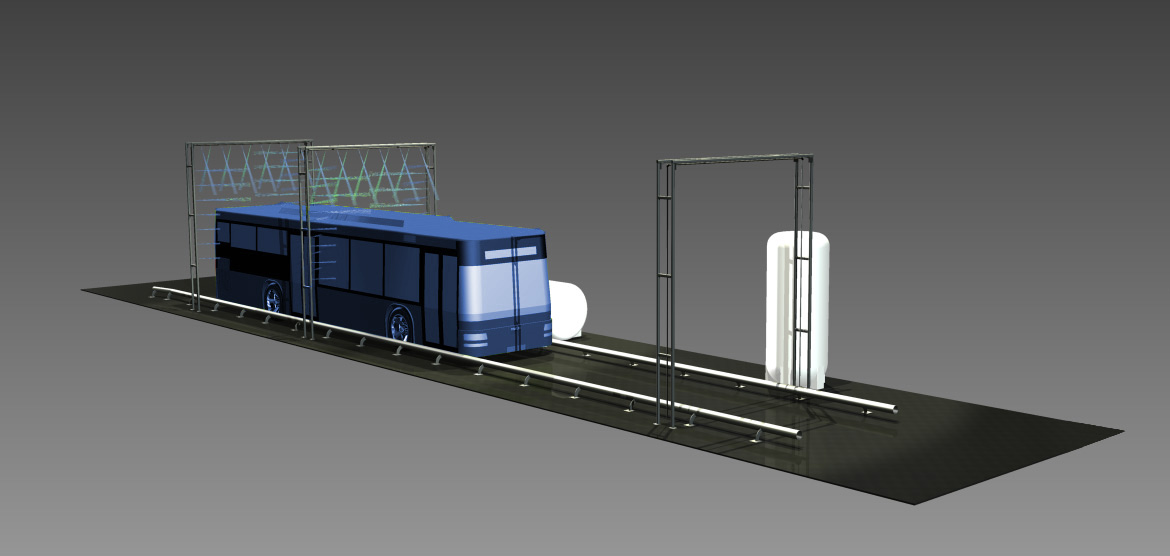Custom Fleet Wash and Equipment Technology
The DyChem Fleet Wash System, incorporates a touchless two-step procedure that we designate as "shock treatment". The first step employs the use of a low pH product that is applied to the entire vehicle surface. After the first step or low pH application takes place, the vehicle travels to the second arch where an alkaline product is applied to neutralize the low pH application. The rapid neutralization at the second arch is the chemical "shock" result. The chemical reaction at this point releases the statically held road film, dirt, grease, grit, and grime from the surfaces of the vehicle.
Conventional cleaning methods cannot produce this phenomenon. The surfactants and wetting agents contained in the alkaline product not only neutralize the first step product (resulting in an optimum pH, a slightly alkaline solution ready for the drain), but also releases the static road film and removes exhaust smoke trails and oil associated foreign surface dirt. The released soil and spent cleaning solutions, are flushed from the vehicle's surface with high volume impinging rinse immediately following the second cleaning step. There is no need for further dwell time. The entire wash and rinse cycle for a tractor and 53 foot trailer takes approximately 90 seconds and consumes 125 - 200 gallons of water. Shorter vehicles will take less time and consume less water.
The DyChem Fleet Wash System, is fully automatic and only requires the driver to operation and complete the wash cycle. Chemical solution and rinse are applied to the vehicle only as long as it remains in the individual application zone. The use of micro switches for pump activation enables efficient application of pre-mixed chemical solutions, preventing over usage of both chemical and water, while preventing waste. Each segment of the cleaning system can be isolated to run independently along with timers set at the customers' specifications, adding versatility to the wash program. The "low-use cost" are more noted when recommended control speeds are employed.

